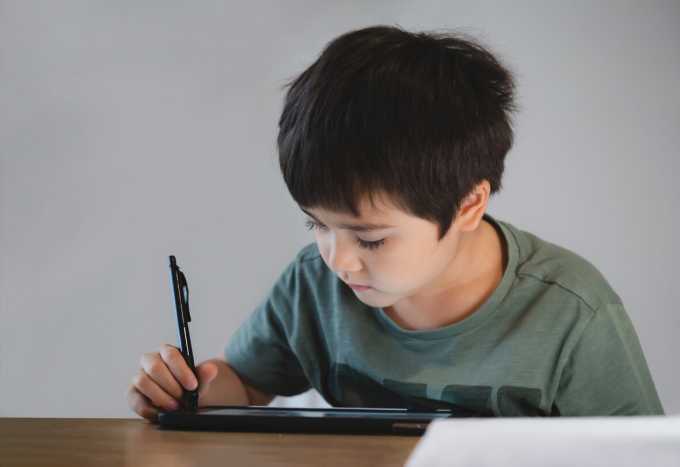Starting counting is a significant milestone in children’s development. Though it seems like children learn when they start school, they start learning numbers just as soon as they start exploring the world around them. Other skills they have like identifying shapes help build on what they actually already know.
Counting is taken for granted often. However, there is a lot of research about where our capacity as humans to do math comes from. Some scientists suggest that we are all born with the innate sense of number in our brains.
Though we think that counting has to be taught, we are born with an instinct that the neuropsychologist Brian Butterworth explains as something similar to the idea of color. We perceive the ”blueness” of the sky just as we can perceive the ”threeness” of a group of objects.
When is the Perfect Time for the Children to Learn Counting Numbers?
Of course, having this instinct for the number of objects when we are born doesn’t mean that we don’t have to learn the names and the symbols of numbers to develop that instinct. Children start learning math as soon as they are out in the world and there are certain math milestones most children reach around approximately the same age. However, as we always mention, children develop at different rates. This means that if your child doesn’t have the skills listed for their age group, just be patient and on the lookout.
Similar to reading and talking, counting and math skills and thinking can be introduced to the child from the start. Studies show that children as young as 12 months can have a sense of how many items are in a set that is up to three objects thanks to their innate sense of number. When children start making the connections between the language we use to count and this innate sense, they learn counting.
Counting everyday objects around the house can be a great start for parents to count along with their children. Children may first learn the numbers in a different order, and may even repeat and memorize a sequence of numbers or counting. It is just like singing the ABCs. Songs could be great helpers in teaching children how to count. Children develop the ability to understand the actual concept of counting generally around the ages of two and four. By the age of four, children usually can count up to 10 and/or beyond.
You may notice that your toddler is skipping some numbers along the way, like jumping from 3 to 6. This is called pre-counters where toddlers start saying numbers in no order. This is very typical for two-year-olds especially. Don’t worry, as they are just beginning to develop their skills. When you notice this happening, model the correct way of counting and they will hear you do the counting the correct way. Keep them exposed to counting and numbers as much as you can, just like what you are doing with reading.
Following the pre-counter stage comes the chanters level. Children may say numbers and count but do this in a sequence. Meaning that they group these numbers. You can observe this when if you interrupt them, they will have to start over rather than continuing from where they left off. Then, reciter children can verbally count to 5 and so on. However, this is still pretty advanced for a child at this age so it should not be expected right away.
Children at the age of three to four can typically advance to a level of math that is a one-to-one correspondence. They can point at objects and count them. You can practice with your child this skill easily. For instance, to start off easy, put their toys in a straight line and have your child point to each toy as they count them. This behavior model can be used with infants and toddlers to develop their counting skills.
Come along with 200k+ families!
Explore the endless possibilities of learning!
Download for Free.
What is Rote Counting?
Rote counting is the simplest number concept that children can develop. It is the ability to say numbers in order from memory, so it basically consists of counting numbers sequentially. Most children find it easy to count by rote. Usually, this skill begins developing before children recognize numerals. When the child is exposed to counting and numbers both at home and at school, they start to develop together.
Through rote counting, children don’t actually count the objects, they just say the numbers in their correct sequence. It’s like going 1, 2, 3, 4, 5, etc. Here, the child doesn’t count objects or actions. Rote counting is just saying a sequence of numbers, and the simplest way is starting from one and counting upwards. It is a core skill related to early maths.
Once the child gets the hang of it, rote counting can also be done backward and starting from different points. When the child grasps this concept and gets this knowledge, they can apply it in different ways and contexts.
The importance of learning rote counting comes before the ability to count objects. Rote counting gets into the picture when a child sees five toys and wants to count them. They would have to have the sequence of numbers in their head first in order to work out how many toys there actually are. If rote counting is not established at first, other skills like addition, subtraction, times tables or money may not be learned accurately. Repetition is the best possible way to rote learning.
Rote counting can be developed and practiced easily with your kid. Try to incorporate counting in your daily routine with your child. You can count the items you got from the grocery store, or create or use counting songs as they will be catchy enough to help your child learn rote counting more quickly. One of the good counting song examples is 1,2,3,4,5 – Once I Caught a Fish Alive.
Math Skills in Different Ages
Each child develops at a different rate than others. However, there is an age group where certain skills develop to take as reference. Here are math skills that children acquire at different ages:
Age 0 - 12 months - Babies
- Starts to understand basic cause and effect relations
- Starts to understand sizes and relative sizes, like small and big
- Starts to understand words related to quantities
- Starts to predict the sequence of events, like opening the door means mommy is coming
Age 1 - 2 years - Toddlers
- Can use fingers to show how many years old they are as they understand that numbers mean ”how many”
- Can match certain basic shapes, like putting the triangle in the triangle hole
- Can understand words indicating comparison or measure like behind or faster
- Can start to recite numbers but may skip some
Age 3 - 4 years - Preschoolers
- Can compare and contrast height or size
- Can recognize shapes around
- Can sort things out based on color
- Can make the connection between numerals and number names, like 2 and two
- Can count up to 20
Age 5 years - Kindergartners
- Can add by counting their fingers on one hand
- Can follow very basic maps
- Can draw symmetrical shapes
- Can understand and follow directions that have multiple steps
Age 6 - 7 years - First and second graders
- Can understand and know the difference between 2D and 3D shapes
- Can count to 100 by ones, twos, fives, and tens
- Can write and understand numerals from 0 to 100
- Can write and recognize the words for numbers from one to twenty
- Can do basic addition and subtraction up to 20
Age 8 - 9 years - Third graders
- Can know how to do multiplication and division
- Can do addition and subtraction
- Can handle money
- Can use paper and pencil to solve math problems
Basic and Fun Math Games for Counting to 10
We have gathered some basic and fun math games that will develop your child’s sense of numbers, counting, and math!
Count with Dominoes!
In this game, you can use dominoes to practice counting and maths. You can draw your child a worksheet where you will separate the page into boxes. You can then give your child a domino for them to count the dots on the two sides.
If you would like to put math into the game, you can put one addition or subtraction, where the child will write or tell the numbers and the result. You can also play this game with more than one child to turn it into a competition!
Toy Car Race!
You can play this game with some toy cars, cardboard tiles, and dice. You can race your child or you can have your child and other children play at the same time. The goal of the game is to move 10 tiles to get your toy car to finish the race. The number of tiles can be increased depending on which numbers you would like to work on.
Your child will roll a die and lay down a tile to move their car forward. However, in order to get to tile 10 at the end, they have to roll the number they need. Going over is not allowed. This will help your child practice counting as well as some basic addition.
Makeshift Weight Station
You won’t need much for this game. Get a clothing hanger and hang two plastic cups on either side of the hanger. Have your child drop small items into the cups to see which items weigh more or less. Kids love this game and putting items in the cups. Have your child or multiple children guess what weighs more first! You can also ask them to guess how many of the objects in the cup weigh the same.
10 Rocks
This is a great outdoor activity to learn counting and math. Prepare buckets with numbers on them. Have your child look for and gather rocks and put them into the buckets to complete the number on the bucket. You can also add some other features into the mix, for instance, have your child look for 5 big rocks for the big rock bucket and 10 small rocks for the small one.
Last Updated: 23 December 2022




